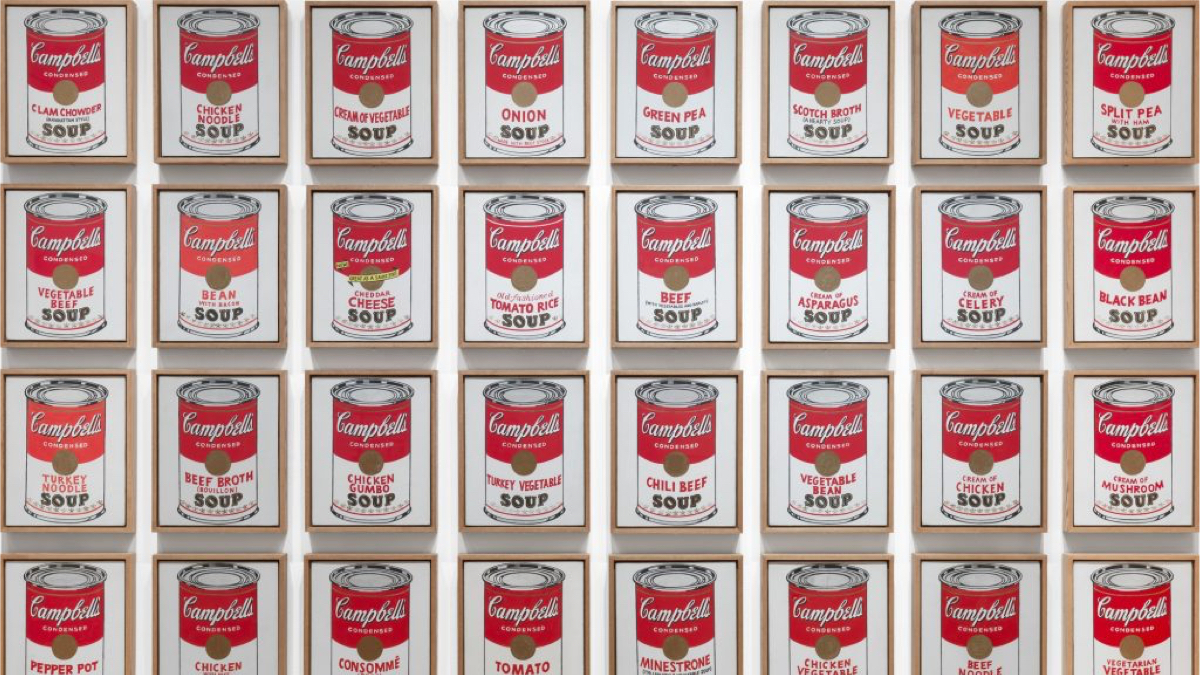
10 American Artists You Should Know
Since the mid 20th century, the United States has been the leader in the art market. The awarding of the Golden Lion to the American Rauschenberg at the 1964 Venice Biennale testifies to the shift in primacy from the School of Paris to the New York School. Today, in addition to its museums with the most prestigious collections, the “Big Apple” is the city with the most galleries. In fact, more than 100,000 artists have set up their studios there, taking advantage of the opportunity to try their luck with more than 1,500 galleries. American artists of the 20th century were the catalysts of modern and contemporary art. Artsper now presents 10 of the most famous of them!
The Mentors of Modern Art
1. Edward Hopper (1882-1967): Between Realism and Symbolism of the American Way of Life
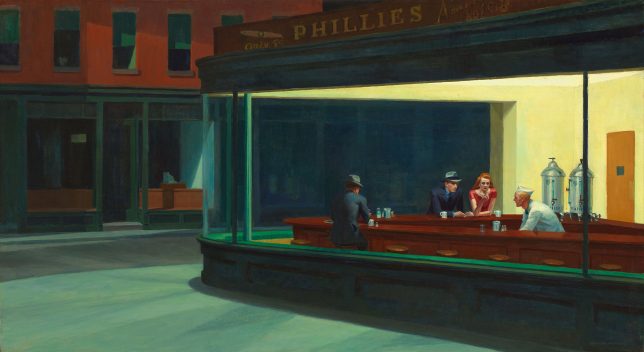
He was the painter of urban America at the beginning of the 20th century. Giving his depictions of everyday life a mystical atmosphere, Edward Hopper managed to sublimate the most innocuous subjects.
Born in New York, he trained as an illustrator before studying in a school of painting. He traveled several times to Europe in the early 1900s. There, he was more interested in the Impressionists, such as Monet and Degas, then in the Cubist avant-gardists of his time. Instead of abstract representations, Hopper preferred naturalistic representations of contemporary landscapes and customs. Upon his return to the United States, the artist began a career as a commercial artist before finally deciding to devote himself entirely to painting.
It was during the inter-war period that he acquired a certain prestige. Passionate about architecture, he first produced watercolors of 19th-century attic houses, which were much appreciated by collectors. In the manner of the Impressionists, his subjects involve buildings painted at different times of the day. He favored sunrises and sunsets, revealing his attraction for depicting variations in luminosity.
A changing society
He later portrayed the changing American society and is now considered one of the main representatives of American realism. A certain melancholy always emanates from his scenes. In his work Nighthawks, it is embodied by the solitude of the characters, isolated and silent. It is also a sign of nostalgia for a bygone America, which is becoming as urbanized as it is individualized…
As a precious witness of his time, he manages to immortalize suspended time on his canvas. The theatricality of his compositions, obtained by a powerful contrast between shadows and raw light, will be a source of inspiration for the photographic and cinematographic world.
2. Man Ray (1890-1976): From Dadaism to Surrealism
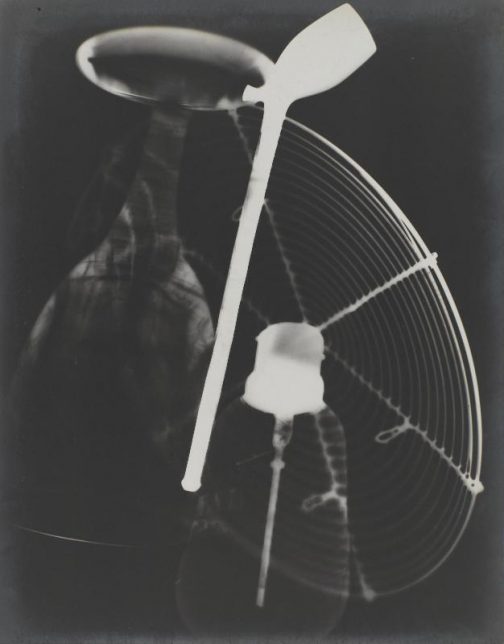
Painter, draftsman, director, designer… This artist, whose works are available on Artsper, was best known as the photographer of the Surrealists.
After studying industrial design, he refused to enter a school of architecture to devote himself fully to art. Settling in New York in the early 1910s, he frequented Alfred Stieglitz’s “291” gallery. Stieglitz introduced him to the technique of photography and many artists of the European avant-garde. In 1913, he took part in the Armory Show. This was the first international exhibition of modern art, bringing together representatives of Fauvism, Cubism, and Futurism. After a first solo exhibition in 1915, he joined the Dada movement. Born as a reaction to the absurdity of the First World War, this intellectual, literary, and artistic movement was characterized by a radical rejection of society’s political, social, and ideological values. It was during this period that he began experimenting with photography.
In 1921 he left America for Paris where he continued his research and discovered by chance a new photographic technique: “rayography”. By exposing a sheet of white light-sensitive paper to light, the parts not covered by objects become blackened. He then obtains representations with spectral forms, constituting dreamlike and mysterious landscapes in which everyday objects are transcended. At the same time, he became involved in the surrealist movement, in which he participated in all exhibitions from 1925 onwards. In 1929, he met Lee Miller, who became his mistress and assistant. Together, they exploited the aesthetic potential of solarization, a photographic process consisting of exposing a photograph too early. In this way, the zones of darkness and brightness are reversed.
Among the most important American artists in the history of art, he is the one who has revolutionized the art of photography!
3. Norman Rockwell (1894-1978): The Hyperrealism of the America’s Storyteller
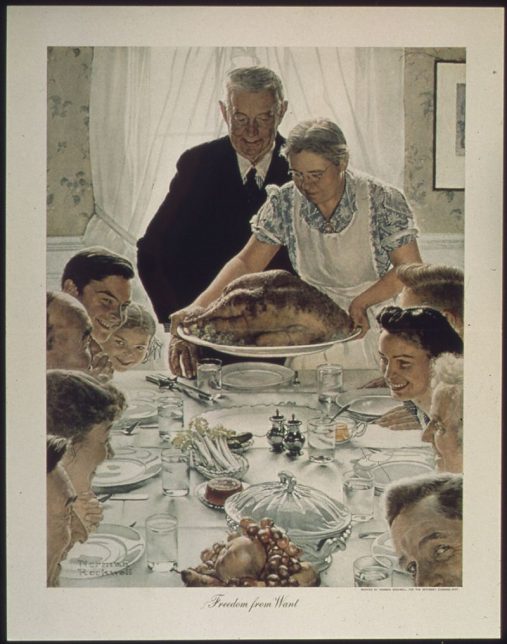
Known for his magazine illustrations, Norman Rockwell‘s works trace the history of the United States from the interwar period to the postwar period.
Fascinated by drawing since his childhood, he entered the American Academy of Design in New York at the age of 16. Then, in a second time, he joined the Art Students League, a prestigious school of Fine Arts. Talented, even before reaching the age of majority, youth magazines commissioned his first illustrations.
The year 1922 marked a turning point in his career. He painted his first cover for the famous newspaper The Saturday Evening Post. This was followed by a 47-year collaboration during which Rockwell produced 321 more covers. In a realistic, photo-like style, he portrayed the daily life of the American middle class, always with kindness and sometimes humor. It is in this way that he is linked to the American regionalism movement.
A conversation around war
During the Second World War, his illustrations affirm his participation in the war effort. Inspired by President Roosevelt’s speech, in 1943 he produced a series of four paintings entitled The Four Freedoms. Franklin Roosevelt’s speech was intended to boost American morale by announcing a better future. This would be based on human rights and four freedoms: freedom of speech, freedom of worship, and freedom from fear and want. The painter then chose to transcribe these four concepts into scenes of daily life. He wants to show Americans that they are not just abstract ideals.
In the following years, as the success of these four images made him very popular, his commissions declined. Indeed, newspapers began to prefer photography to press cartoons. Nevertheless, until the end of his life, he will seek to use his art to defend the causes that are close to his heart: civil rights, the fight against segregation, poverty, and war. He was one of the American artists of his time to be the most politically involved.
4. Jackson Pollock (1912-1956): Dripping Pioneer

An American painter of Abstract Expressionism, particularly famous for his practice of action painting, Jackson Pollock was a major influence on contemporary American painters. His death in full world consecration has fostered the legend of this cursed artist.
Spending his childhood in a precarious environment, between the absence of his father and the authority of his mother, he became an alcoholic at a very young age. At the age of 11, his visit to an Indian reserve and the discovery of abstract motifs of a so-called “primitive” art will leave a deep impression on him. For Pollock, art is, above all, a work of art. It allows him to express his emotions and to free himself from his anxieties, resentments, and anger. In his action paintings, close to performances, it is the action of painting and not the painting that is important.
Living a large part of his life in destitution during the Great Depression, he benefits from the Federal Art Project. Set up by the Roosevelt government as part of the New Deal policy, this program supported American artists through major public commissions. He joined the “Mural Painting” section in 1935 but was excluded in 1938 for absenteeism. At this time, he began a detoxification program.
Pollock’s work receives attention
In 1943, he took part in the first major exhibition organized by a famous American modern art collector, Peggy Guggenheim. Among the jury members, Piet Mondrian and Marcel Duchamp gave him a favorable opinion, so much so that the famous patron of the arts offered him a monthly salary and dedicated a personal exhibition to him. While he gradually made a name for himself in the art world, in 1947 he began to practice dribbling. It consists of pouring buckets of paint directly onto the canvas. Through this new technique of working horizontally, he breaks with the traditional codes of pictorial practice, while abandoning himself to the most total abstract art.
At the height of his success, however, his old demons still haunted him. Drowning in alcohol, he died in a car accident, driving while intoxicated. You can find some of his editions on the Artsper website.
The Major American Pop Culture Artists
1. Andy Warhol (1928-1987): The Father of Pop Art
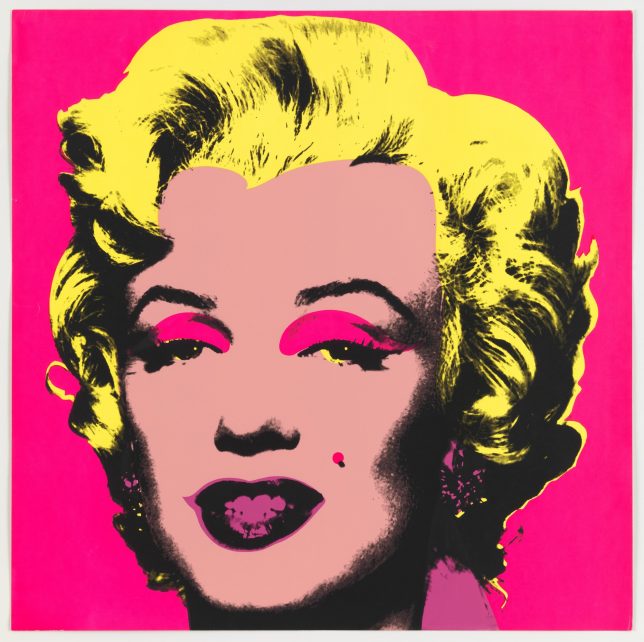
He turned art into a consumer product while at the same time he gave to everyday objects the status of works of art. Andy Warhol is rightfully considered one of the founders of Pop Art.
Warhol, whose creations are available on Artsper, comes from the poor working-class background of Pittsburgh and is the son of Slovak migrants. He managed to get into university to study Fine Arts. After graduation, he moved to New York in 1949. There he began a career as a commercial artist for fashion magazines and quickly gained a significant reputation in the advertising world.
A change in path
At the end of the 1950s, he devoted himself to painting. He was first inspired by comic book graphics. But it was his paintings on consumer objects, starting with Campbell’s Soup cans, that would go down in art history. In order to meet an almost mass demand, he began using silkscreen printing in 1962. This stencil-based printing technique enabled him to produce his works in industrial quantities in a multitude of striking colors. His portraits of celebrities, such as Marilyn Monroe, are today present on the picture rails of the world’s greatest modern art institutions.
Later, in 1964, he opened his Factory, the Mecca of New York’s artistic life. It is both a production workshop and a recording studio for his experimental films.
Celebrated during his lifetime and recognized as an icon of Pop Art, he became at the end of his life a patron of the arts in the late 1980s. Collaborating with emerging artists such as Jean-Michel Basquiat and Keith Haring, he made his name a brand.
2. Keith Haring (1958-1990): Activism through Street Art

Known worldwide for his frescoes of colorful figures with thick black outlines, Keith Haring is also known as one of the American artists committed to the fight against homophobia and AIDS.
Like Andy Warhol, he was born in Pittsburgh and began studying advertising graphics. However, wishing to experiment freely with his own artistic research, he left for New York. There, graffiti inspired him. Eager to take art out of its frame to reach a wide audience, he began by drawing with chalk on the black advertising blackboards of the subway. At the same time, frequenting the artistic milieu of the New York underground, he had his first exhibitions in galleries. Finally, he was invited to the 1985 Biennale de Paris, while he was in the midst of his international rise.
Deeper messaging
Behind the appearance of children’s drawings, with synthetic forms, some of which can be found on the Artsper website, he deals with serious themes such as racism, violence, drugs, and environmental destruction… By expressing himself in the street, he seeks to have more visibility to denounce social prejudices. To this end, he participates in art education programs for young people and responds to several public commissions. For instance, he executed a fresco on one of the walls of the Necker Hospital in 1987.
Knowing that he was suffering from AIDS in 1988, he put his art and his notoriety at the service of the LGBT cause and the fight against this disease. To this end, he created the Keith Haring Foundation in 1989. Driven by a desire to transform the world, he died at only 31 years of age. Despite his short life, his legacy, both artistic and social, was no less considerable.
3. Jean-Michel Basquiat (1960-1988): The Elevation of Urban Art to the Rank of Fine Arts
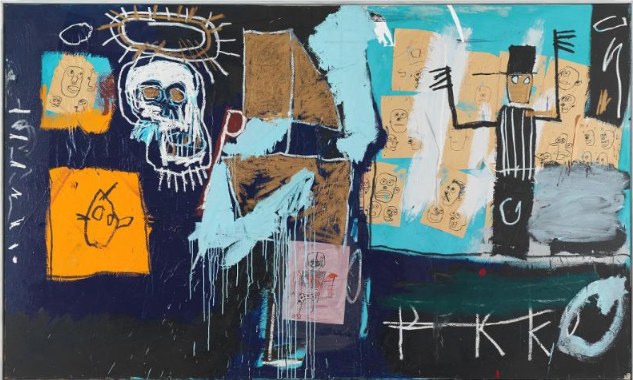
He is one of the most famous African-American artists in the world. In 2017, almost 30 years after his death, one of his works was sold at auction for a record price of more than 110 million euros. This makes Jean-Michel Basquiat, some of whose drawings can be seen on the Artsper website, one of the most expensive American artists in the world.
Born in Brooklyn to a Haitian father and a Hispanic mother, this precocious drawing genius produced his first graffiti at the age of 16. He starts to sign under the pseudonym SAMO (“Same Old Shit”, literally “Same Old Shit”). Basquiat sets the tone: of a protestant temperament, he refuses to conform to the dictates of society.
Ambitious to become the first internationally known black artist, he managed to be spotted by his idol, Andy Warhol. The latter introduced him to the greatest New York gallery owners.
Blurred lines
His works, of great singularity, frighten as much as they fascinate. Indeed, they are of great violence. With numerous evocations of death, his compositions are characterized by the introduction of tribal elements from his cultural heritage. His quest for identity pushes him to denounce the oppression of minorities, representing a chaotic world, carrying a powerful symbolism. Finally, as a child of Pop culture, he mixes different techniques in the same composition: graffiti, painting, collages. He disregards pictorial traditions and blurs the boundaries of the fine arts.
His death following an overdose put an end to his career at the age of 28. A career, admittedly short, but particularly prolific: he produced more than 800 paintings and 1,500 drawings. His chronic malaise, perceptible in the aggressive features of his compositions, paradoxically precipitated his end as much as his success.
The Emerging Contemporary Artists
1. Jeff Koons (1955): The Apogee of Commercial Art
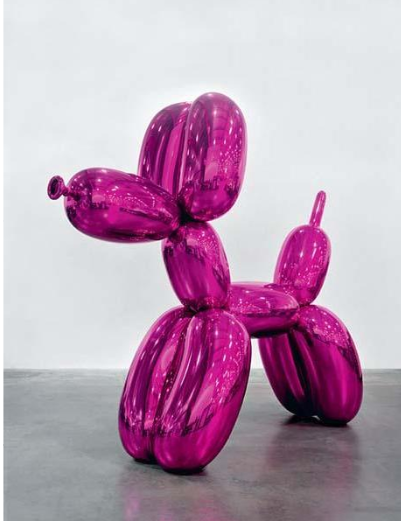
While being one of the most celebrated American artists of the 21st century, Jeff Koons is also one of the most controversial. His works are denigrated by some as industrial art or are only counterfeit according to others. Yet they are the most expensive in the world and are exhibited in the world’s leading art institutions. A success story!
Attracted by art at a very young age, Jeff Koons did not meet with the success he had hoped for with his first creations. Forced to work as a financial broker, it was not until the 1980s that his monumental sculptures, representing mass consumer goods such as his Balloon Dogs and Inflatable Rabbits, became popular with collectors. He then created, in the manner of Andy Warhol, a studio in New York with about thirty assistants. Today, it is more like a factory, with more than 100 employees. Thus, the works stamped Jeff Koons are no longer made by his hands.
In fact, Jeff Koons’ stainless steel productions, available on Artsper, are in line with Pop Art, drawing their inspiration from the popular imagination. He diverts them by giving them an industrial character, revealing certain affinities with Marcel Duchamp’s ready-made. However, if Andy Warhol brought art into the industrial era, the man of finance brought it into the era of globalization. His kitsch icons can be seen all over the world… And that’s not without causing a few scandals!
His works displayed
In 2008, he exhibited a dozen of his sculptures at the Palace of Versailles, where an event was held in the name of defending “French artistic purity“. More recently, it was his Bouquet of Tulips that caused a great deal of controversy. Indeed, the tribute to the victims of the Paris attacks of 2015 and 2016 has been criticized as contributing to the ugliness of the public space.
In addition, the artist has been charged in several cases of plagiarism, reappropriating subjects from existing photographs or advertisements. The fact remains that Jeff Koons’ reign seems to have a bright future ahead of it! In May 2019, reaching the price of 91.1 million euros, the auction of his Rabbit work made him the most expensive living artist in the world.
2. JonOne (1963): The Consecration of Graffiti
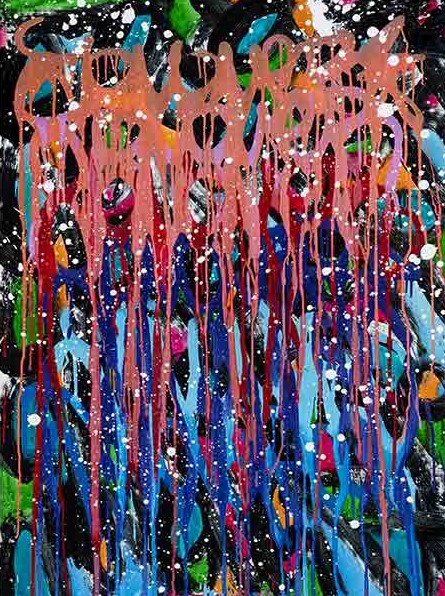
Considered as one of the most important American artists of abstract expressionism in the world of graffiti, JonOne, to be discovered on the Artsper site, is as much a descendant of Jackson Pollock as of Jean-Michel Basquiat. No doubt that the succession of American artists is assured!
Born in New York City, in the working-class neighborhood of Harlem, and of African-American origin, like Jean-Michel Basquiat, young John also plays hooky. As a teenager, he roamed the New York subway lines where he made his first tags. According to him, “the subway is a museum that crosses the city,” considering graffiti as an art form in its own right.
His meeting with the French graffiti artist Bando was decisive for the rest of his career. The latter convinced him to join him in Paris. There, abandoning the asphalt without abandoning his paint bombs, he settles in the 1990s in a workshop of the Ephemeral Hospital. There he produced his first paintings. He was quickly spotted and exhibited in the most important French contemporary art galleries.
JonOne’s messaging
JonOne manages to touch the public with the sensitivity and poetry emanating from his paintings. Allowing his imagination to run free, they allow him, in his words, to open up to himself. Evacuating any figurative reference, he lets himself be carried away by the movement, the colors, and the energy of the cities. From then on, only the impulse of his emotions guides his gestures. Streaks of bright and spontaneous colors emerge only from them.
At the crossroads of lyrical abstraction and urban art, modern art and contemporary art, JonOne manages to take advantage of his American artistic heritage to offer us his renewal. The hegemony of American artists in the history of art is far from coming to an end!
3. Shepard Fairey (1970): The Political Commitment of Street Art

He is famous for designing Barack Obama’s campaign poster for the 2008 presidential election. Demonstrating that street art has a place in politics, the Boston Institute of Contemporary Art has recognized him as the most influential street art artist.
Designing t-shirts and skateboards as a teenager, Shepard Fairey, represented on Artsper, entered the Rhode Island School of Design in 1989. With a group of students, he created stickers and posters depicting the French wrestler André the Giant. The visual went viral and spread around the world. In 1998, associating the image with the word “Obey” (meaning “obey”), he made this propaganda parody his signature.
Obey’s notoriety
But it is more thanks to his Hope poster that he gained international notoriety. Supporting the candidacy of the future president Barack Obama, he created a series of posters. The most famous is a portrait of the politician in the colors of America. Emblem of Obama’s presidential campaign, it represents a candidate resolutely turned towards the future. Spread around the world, it made the front page of Time magazine. The National Portrait Gallery in Washington finally bought the original.
Since then, he has had a string of exhibitions while continuing his activities as a street artist. He notably executed several frescoes on the walls of buildings in the 13th arrondissement of Paris in 2012 and 2016. One of them represents a Marianne surrounded by the national motto “Liberty, Equality, Fraternity”. It was created following the attacks of 13 November 2015. Thus, it testifies to her perpetual commitment to the defense of great causes, such as democracy and liberties. 8 years after having invested himself in the election campaign, Shepard Fairey reiterates. Using the same graphic codes, he changed the slogan to “Nope” to oppose the election of Donald Trump. Celebrating his 30-year career at the Grenoble Street Art Fest in 2019, Shepard Fairey seems to have definitively established himself in the international artistic (and urban) landscape!
An ongoing legacy
Thus, this overview of modern and contemporary American artists reveals the crucial role of the United States as the cradle of artistic creation. Since the beginning of the 20th century, it is on its soil that the major artists of the history of art were born. With no ties to the European pictorial tradition, they have been able to propose new plastic solutions. Initially tinged with nationalism, American art became more popular and universal in the middle of the 20th century. The result was its assimilation throughout the world and the consecration of the United States as the leading artistic power.

About Artsper
Founded in 2013, Artsper is an online marketplace for contemporary art. Partnering with 1,800 professional art galleries around the world, it makes discovering and acquiring art accessible to all.
Learn more











